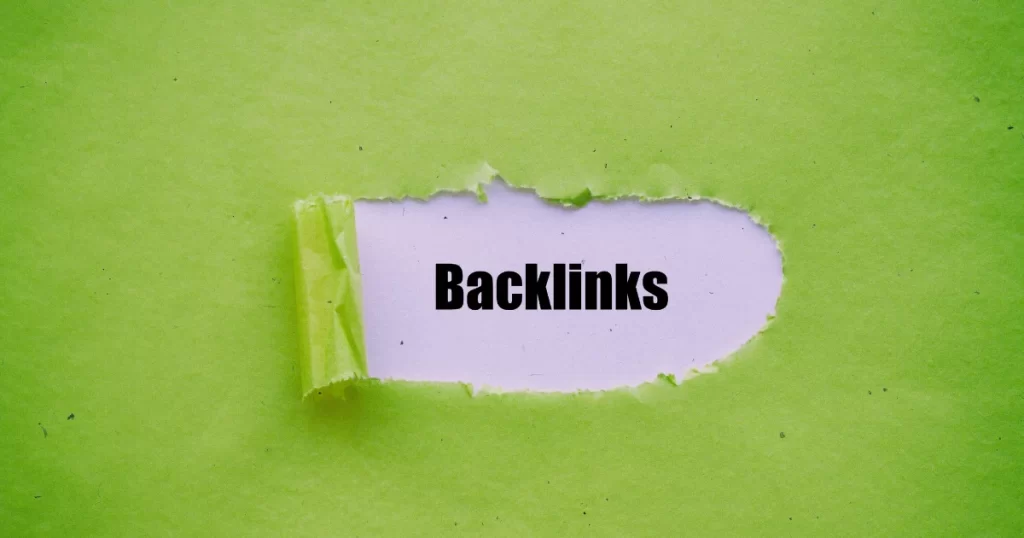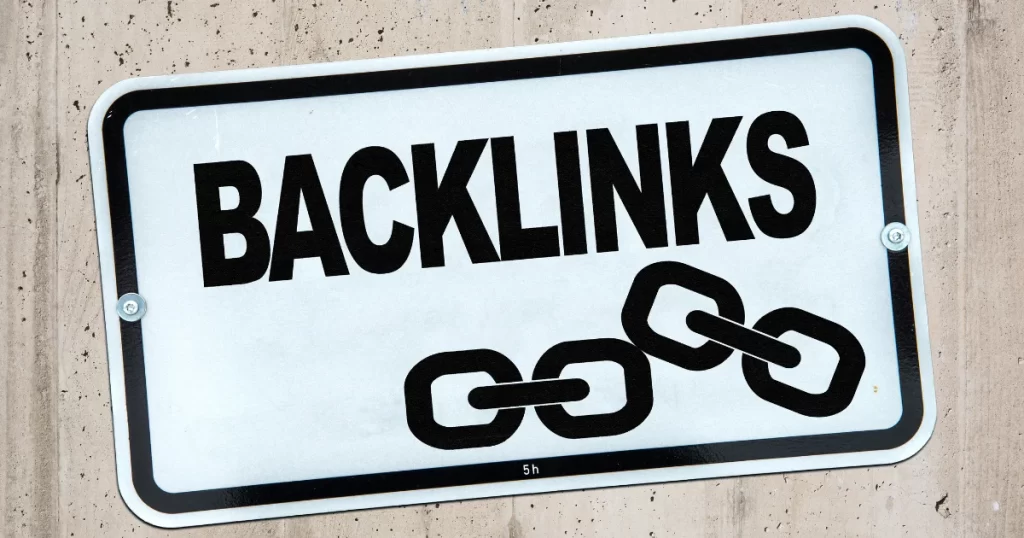Backlinks. The word alone can make any blogger’s heart race faster than spotting a typo on a published post. They’re the behind-the-scenes MVPs of SEO—those sneaky little endorsements from one site to another that scream, “This content is worth your time!” Think of them as a vote of confidence, a high-five in the vast, cold world of the internet.
But let’s not sugarcoat things: getting quality backlinks is no cakewalk. If backlinks were easy to acquire, every blogger would be swimming in them, and Google wouldn’t have to work overtime sorting the SEO wheat from the chaff.
So, what’s the plan? Do we cry into our keyboards and hope backlinks magically appear? Nope. Instead, let’s get strategic. Below, I’ve laid out 10 fast ways to acquire quality backlinks without sacrificing your sanity (or dignity). Stick with me, and I promise you’ll leave with a roadmap to turn your blog into a backlink magnet.
1. Become a Source for Reporters and Bloggers with HARO (Yes, It Works)

Ever dream of being quoted in a major publication? Or showing off a shiny backlink from a big-name website? HARO, or Help a Reporter Out, is your golden ticket. Think of it as Tinder for journalists and sources—but without the awkward pick-up lines.
Here’s how HARO operates:
- Sign up for free: Head over to helpareporter.com and register. You’ll receive daily emails filled with journalist queries.
- Sift through the chaos: Each email contains dozens of requests, from business insights to bizarre niche topics (yes, someone out there will need your expertise on 18th-century sock knitting).
- Respond like a pro: Craft a pitch that’s short, snappy, and adds immediate value. Reporters have inboxes fuller than a Black Friday checkout line, so make every word count.
- Wait for magic: If your pitch hits the mark, you’ll land a mention—and a backlink—from a reputable site. Cue celebratory dance.
Why HARO Works
HARO isn’t just about backlinks; it’s about authority. Every time a credible publication links to your blog, Google perks up and takes notice. It’s like gaining street cred in the SEO world.
How to Nail HARO Pitches
- Be fast: Journalists often work on tight deadlines, so respond as soon as you see a query that fits.
- Be specific: Don’t ramble. Answer the query directly and offer insights that make you stand out.
- Include proof: Cite your credentials. Are you a food blogger with a decade of experience? Mention it.
- Add personality: Dry, robotic pitches get deleted. Write like a human who cares.
💡Pro Tip: Not every pitch will land, and that’s okay. Persistence is key. Treat HARO like a numbers game—the more you pitch, the higher your chances of scoring backlinks from high-authority sites.
2. Create Skyscraper Content That Attracts Links Like Crazy
If blogging strategies were a high school popularity contest, the Skyscraper Method would win Prom King. It’s the ultimate hack for creating content so irresistible, people can’t help but link to it.
What Is Skyscraper Content?
Imagine looking at a skyline. One building towers above the rest, drawing all the attention. That’s your blog post when you use the skyscraper technique. The idea is simple:
- Find the best-performing content in your niche.
- Make something even better.
- Promote it like it’s the second coming of viral cat videos.
The Skyscraper Process
1. Find Link-Worthy Content
Use tools like Ahrefs, SEMrush, or BuzzSumo to identify popular content that’s already racking up backlinks. Look for:
- Evergreen topics: Guides, how-tos, and comprehensive lists.
- Gaps: What’s missing? Could the content be more detailed, visually appealing, or up-to-date?
2. Outshine the Competition
Take the original content and level it up in every possible way:
- Depth: Add more insights, examples, or case studies.
- Design: Include visuals like charts, infographics, and videos.
- Personality: Inject humor, storytelling, or a unique perspective.
For example, if you’re in the fitness niche and find a “10-Minute Abs Workout” post with 100 backlinks, create a “15-Minute Abs Workout That Burns 3x More Calories (With Video!)” version.
3. Promote Like Your Blog Depends on It
Here’s the kicker: skyscraper content doesn’t generate backlinks on its own. You need to:
- Reach out to linkers: Email everyone who linked to the original post and politely suggest they check out your upgraded version.
- Leverage social media: Share your content widely and tag influencers in your niche.
- Engage in forums: Drop your link (where appropriate) in Reddit threads, Quora answers, and niche communities.
Why Skyscraper Content Works
People want to share and link to the best resources available. If your content is the most comprehensive, visually appealing, and up-to-date on a topic, it’ll naturally attract backlinks.
💡Pro Tip: Don’t settle for “good enough.” Skyscraper content only works if your post is objectively better than anything else out there. Mediocre upgrades won’t cut it.
3. Reclaim Unlinked Mentions and Turn Them into Backlinks

Picture this: You’re scrolling the web (as one does), and BAM! You stumble upon someone mentioning your blog. But wait—there’s no link to your site. It’s the digital equivalent of someone giving you a shoutout in public but refusing to point out where you’re standing. Rude, right?
Luckily, this is fixable. And better yet, it’s one of the easiest ways to snag backlinks without having to jump through flaming hoops.
How to Find Unlinked Mentions
The first step is knowing you’re being mentioned. (You can’t fix what you don’t know exists.) Here’s how to play detective:
- Set Up Google Alerts
- Go to Google Alerts.
- Create an alert for your brand name, blog title, or any unique term related to your content.
- Customize your settings to get real-time notifications when someone mentions you.
- Use BuzzSumo
- This tool is like a digital bloodhound for mentions. Plug in your brand name, and it’ll sniff out where you’ve been talked about. BuzzSumo even highlights linked vs. unlinked mentions, saving you hours of sleuthing.
- Leverage Ahrefs’ Content Explorer
- Ahrefs isn’t just for spying on competitors—it’s perfect for tracking mentions too. Use the “Highlight Unlinked Mentions” feature to pinpoint missed opportunities.
The Art of Turning Mentions into Links
You’ve found an unlinked mention—now what? Time to flex those communication skills.
Crafting the Perfect Outreach Email
Your goal is to be friendly, professional, and just persuasive enough to make the site owner add your link. Here’s a template:
Subject Line: Quick Note About Your Recent Post
Body:
Hey [Name],
I just came across your [article/post] about [topic], and I wanted to say—it’s fantastic! I love how you [specific compliment about their content].
I noticed that you mentioned [Your Brand/Blog Name], which is awesome—thank you! I was wondering if you’d be open to linking to my site so your readers can easily find more info about [related topic]?
Here’s the link for your convenience: [Insert URL].
Thanks so much for considering this, and keep up the amazing work!
Best,
[Your Name]
💡Pro Tip: Don’t be pushy. Charm works better than force. If they say no, don’t badger them. Move on to the next opportunity—there are plenty of mentions out there waiting to be linked.
4. Engage in Guest Blogging: Build Relationships and Earn Links
Guest blogging is the OG of backlink strategies. It’s like bartering: you provide killer content, and in return, you get exposure and (drumroll, please) that sweet, sweet backlink.
But hold up—it’s not 2010 anymore. Google’s algorithm is smarter than a caffeine-fueled chess champion, and spammy guest blogging will land you in SEO jail. Done right, however, it’s still one of the most effective ways to build backlinks and relationships in your niche.
How to Nail Guest Blogging Like a Pro
Follow these steps to guest blog your way to backlink glory:
1. Find the Right Blogs
Not all blogs are created equal. Targeting high-authority sites in your niche will give you the best bang for your buck. Use these search operators to find guest post opportunities:
- “Write for us” + [Your Niche]
- “Guest post guidelines” + [Your Topic]
- “Submit an article” + [Your Industry]
You can also use tools like SEMrush or Ahrefs to see where your competitors are guest posting.
2. Pitch Like a Rockstar
Your pitch needs to stand out in a sea of “I’d like to contribute an article to your blog” emails. Here’s how to make it pop:
- Personalize It: Mention specific posts you loved on their site.
- Offer Value: Explain how your topic will benefit their readers.
- Be Concise: Nobody wants to read a novel-length pitch.
3. Deliver Killer Content
Once your pitch is accepted, it’s game time. Write a post that’s so good, the site owner will practically beg you to contribute again.
- Match Their Style: Read their existing content to match tone and format.
- Add Unique Insights: Share something fresh and valuable—not a rehash of what’s already out there.
- Include Natural Links: Don’t overdo it. A single, relevant link back to your site in the author bio or content will do the trick.
💡Warning: Don’t overdo it. Google frowns upon excessive guest posting for backlinks. Focus on quality over quantity—think of this as a marathon, not a sprint.
5. Use the Broken Link Building Method

Broken link building is like the Robin Hood of SEO. You’re rescuing websites from the evil clutches of 404 errors while scoring backlinks for yourself.
What Is Broken Link Building?
In a nutshell:
- Find broken links on high-authority sites in your niche.
- Create or repurpose content that fits the broken link’s topic.
- Politely suggest to the site owner that they replace the broken link with your working one.
Step-by-Step Guide to Broken Link Building
1. Find Broken Links
Use tools like:
- Ahrefs: The “Broken Links” report is your best friend here.
- Screaming Frog: Crawl sites for broken links faster than a caffeine-fueled spider.
- Check My Links (Chrome Extension): A quick way to spot 404 errors on any page.
2. Create Replacement Content
If you already have content that matches the broken link, great! If not, roll up your sleeves and create something even better. The goal is to make it irresistible for the site owner to swap out the dead link for yours.
3. Reach Out to the Site Owner
Here’s a template to help you out:
Subject Line: Found a Broken Link on Your Site
Body:
Hi [Name],
I was browsing your [article/page] on [topic] and noticed a broken link pointing to [dead URL]. Just thought you’d want to know!
If it helps, I recently created a resource on [related topic] that might be a good replacement. Here’s the link: [Insert URL].
Let me know what you think, and thanks for your time!
Best,
[Your Name]
💡Why It Works: Website owners hate broken links—they’re bad for user experience and SEO. By offering a solution, you’re doing them a favor while scoring a backlink for yourself. Win-win.
6. Publish Ultimate Guides That Establish You as an Authority
If backlinks are the currency of the internet, Ultimate Guides are the gold standard. These meaty, all-encompassing resources scream, “Look at me! I know my stuff!” and make other bloggers link to them faster than a caffeine-deprived writer to a coffee shop.
Ultimate guides are not just blog posts—they’re content blockbusters. Done right, they establish you as the go-to expert in your niche, boost your SEO rankings, and attract backlinks like a magnet dipped in honey.
How to Create an Ultimate Guide That Demands Attention
1. Choose a Topic Your Audience Obsessively Googles
This isn’t the time to be vague or generic. You need a topic that your audience is dying to understand inside and out. Use tools like:
- Google Keyword Planner: Find high-volume keywords related to your niche.
- AnswerThePublic: Discover what questions people are asking.
- BuzzSumo: Check what content is trending in your industry.
For example, if your niche is fitness, don’t write “The Ultimate Guide to Fitness.” Instead, drill down into something like “The Ultimate Guide to Intermittent Fasting for Beginners.”
2. Cover the Topic from Every Angle Imaginable
This isn’t your average blog post—it’s an encyclopedia on steroids. Dive deep into subtopics, answer FAQs, and include actionable advice. Your goal is to make readers think, “Why would I need to read anything else after this?”
Here’s a suggested structure for your Ultimate Guide:
| Section | What to Include |
|---|---|
| Introduction | Hook your readers with a compelling anecdote or shocking stat. |
| Overview | Define the topic and explain why it’s important. |
| Step-by-Step Guide | Break down the process with detailed steps, examples, and insights. |
| Common Mistakes | Highlight pitfalls to avoid. |
| Case Studies | Share real-life examples to illustrate your points. |
| FAQs | Address common questions readers might have. |
3. Make It Visually Irresistible
Walls of text are a no-go. Spice things up with:
- Images: Illustrate key points.
- Charts and Graphs: Simplify complex data.
- Tables: Compare options or steps.
- Infographics: Make the guide shareable and link-worthy.
4. Promote Like It’s the Best Thing Since Sliced Bread
Writing the guide is only half the battle. To get backlinks, you need eyeballs on it.
- Email Outreach: Let influencers and bloggers in your niche know about your guide.
- Social Media: Share snippets, stats, and visuals to entice clicks.
- Forums and Communities: Drop your guide in relevant Reddit threads, Facebook groups, or niche forums.
7. Develop Unique Tools or Resources
Let’s face it: people love free stuff. And if that free stuff happens to make their lives easier, they’ll not only love you—they’ll link to you. Developing unique tools or resources is one of the smartest ways to attract backlinks. Think of it as creating the digital equivalent of a multi-tool gadget that everyone wants in their arsenal.
What Kind of Tools or Resources Should You Create?
The possibilities are endless, but here are some tried-and-true ideas:
| Tool/Resource Type | Description | Example |
|---|---|---|
| Calculators | Help users crunch numbers related to your niche. | A “Freelance Rate Calculator.” |
| Templates | Ready-to-use files that simplify complex tasks. | Resume templates or email pitch templates. |
| Checklists | Step-by-step guides that ensure users don’t miss anything important. | “SEO Audit Checklist.” |
| Quizzes | Interactive tools that engage users while providing value. | “What’s Your Ideal Workout Plan?” |
| Downloadable Guides | PDF versions of your best content for easy reference. | An “Ebook on Sustainable Living.” |
How to Ensure Your Tool Gets Backlinks
- Solve a Problem: Your tool needs to address a specific pain point in your niche.
- Make It Easy to Use: Nobody wants to read a manual to figure out your resource.
- Promote Like Crazy: Share it on social media, list it on tool directories, and let influencers know.
💡Pro Tip: Gamify your tool. Add an interactive or fun element to your resource. For example, a calorie calculator that also tells users how many donuts those calories equal will get shared—and linked—more often.
8. Leverage Relationships Within Your Niche

Networking gets a bad rap. People imagine awkward handshakes and forced smiles at business mixers. But in the digital world, leveraging relationships is as simple as being genuinely interested in other people’s work.
How to Build Relationships That Lead to Backlinks
1. Share Their Content
Everyone loves a little flattery. Share posts from bloggers and influencers in your niche, and tag them when you do. It’s a great way to get on their radar without being pushy.
2. Leave Thoughtful Comments
No, not the generic “Great post!” kind of comments. Engage with their content by adding value or sparking a conversation. For example:
Bad Comment: “Nice article!”
Good Comment: “I loved your take on [specific point]. Have you considered how [related point] ties into it? Would love to hear your thoughts!”
3. Engage on Social Media
Like, share, and comment on their posts. Slide into their DMs—not with “Hey, can I get a backlink?” but with genuine questions or compliments about their work.
4. Collaborate on Content
Once you’ve built rapport, pitch a collaboration. Co-authoring a post, creating a joint resource, or featuring them on your blog can naturally lead to backlinks.
9. Utilize Resource Pages: The Backlink Buffet You Never Knew You Needed
Resource pages are like the hidden buffet of the internet, and not just any buffet—a backlink buffet. Imagine a page on a well-established site that’s dedicated to curating and sharing the best resources in your niche, and guess what? You could be one of those resources. Sounds like a dream come true, right?
How to Find Resource Pages That Will Actually List You
The first step to getting listed on these magical pages is finding them. They’re often buried, but with the right strategies, you can uncover them like a treasure hunter discovering hidden riches. Here’s how:
- Search for Resource Pages with Precision: Use search terms like:
- “Best [your topic] resources”
- “Top [your topic] tools”
- “[Your topic] resource list”
- “Useful [your topic] links”
- Evaluate Resource Pages: Just because a page exists doesn’t mean it’s worth your time. You need to ensure it’s reputable and actively maintained. If the page hasn’t been updated in years or is littered with irrelevant links, it’s probably not worth your effort. Look for:
- High-authority sites in your niche.
- Pages that are frequently updated.
- Resource lists that are well-organized and user-friendly.
How to Get Listed on Resource Pages
Now that you’ve found your resource pages, it’s time to pitch your content. But hold on a second—this isn’t a cold call, and you’re not going to shove your link in their face. You’ve got to approach this strategically (and with a good dose of charm).
- Personalize Your Pitch: When you reach out, personalize your email. Don’t send a generic message that screams “I’m just here for backlinks.” Show them you’ve taken the time to understand their resource page and how your content fits perfectly into it. For example:Subject: Addition to Your [Topic] Resource Page?
Hi [Name],
I’ve been following your resource page on [topic] for a while, and I really appreciate how thorough and helpful it is. I’ve recently published a comprehensive guide about [specific topic] that I believe would be a great fit for your readers. Here’s the link: [URL].
I’d be honored if you’d consider adding it to your page. Let me know if you need any additional information! - Follow Up (But Don’t Be Annoying): If you don’t hear back after your initial email, follow up. But—this is crucial—don’t be the guy who sends 10 follow-up emails, hoping persistence will win. A simple, polite nudge is all you need:Subject: Just Following Up on My Previous Email
Hi [Name],
I wanted to follow up on my previous email about adding my guide to your resource page. If you’ve had a chance to check it out, I’d love to hear your thoughts! I think it could really help your audience.
Thanks again for considering it!
💡Pro Tip: Build relationships first. If you have the time and energy, start by engaging with the resource page owner before pitching your content. Comment on their blog posts, share their content, or just send a friendly message. Building rapport increases the chances of them saying yes to your backlink request.
10. Conduct Data Studies or Surveys: The Backlink Magnet You Need in Your Life
If there’s one thing that makes the internet collectively gasp and say, “Hey, we need to link to this!” it’s original, exclusive data. There’s nothing quite like a well-researched data study or survey to position your website as a credible authority and attract backlinks faster than a “Breaking News” headline on Twitter.
Why People Love Data Studies and Surveys (And Why You Should Care)
Here’s the thing about data: it’s not just numbers. It’s compelling, persuasive, and shareable. People love to link to studies because they provide new insights, validate their arguments, and (let’s be honest) make them look smart. So, if you can provide fresh, original data, you’re basically handing out backlinks on a silver platter.
Types of Data Studies You Can Conduct:
- Industry Trends: What’s happening in your niche right now? Conduct a study to identify emerging patterns.
- Behavioral Surveys: Ask your audience about their habits, preferences, and challenges.
- Product or Service Feedback: If you’re offering a tool or service, survey your users to get a deeper understanding of how they’re using it.
How to Conduct a Data Study or Survey That People Will Actually Care About
- Pick a Topic With a Clear Relevance: Your survey or study should address a question or issue that your audience cares about. Make sure it’s something that can’t be easily found elsewhere.
- Gather Data and Make It Reliable: The key to a successful study is high-quality data. Be meticulous in your approach, and ensure your sample size is large enough to yield meaningful results. Avoid small, biased, or cherry-picked data.
- Present the Data in a Visually Compelling Way: People love data—if it’s easy to digest. Turn your findings into visually appealing charts, graphs, and infographics. This not only makes your study more shareable, but it also increases the likelihood of other sites linking to it.
| Tip for Data Presentation | What to Include |
|---|---|
| Charts & Graphs | Make trends, comparisons, and distributions easy to understand. |
| Infographics | Condense your study into visually appealing, bite-sized info. |
| Key Findings Summary | A brief, accessible summary of the most important takeaways. |
| Data Sources | Credibility is everything—cite your sources so others can verify. |
How to Promote Your Data Study or Survey for Maximum Backlinks
- Outreach to Influencers and Bloggers: Once your study is live, reach out to influencers, journalists, or bloggers who might find it valuable. Offer them exclusive insights or a chance to discuss your findings.
- Share on Social Media: Post your study on social media platforms like Twitter, LinkedIn, or Reddit. Ask your followers to share the data if they find it useful.
- Submit to Data Aggregator Sites: There are websites that aggregate studies, research, and surveys. Submitting your study to these platforms can result in multiple backlinks from credible sources.
💡Pro Tip: Turn your data into multiple backlink opportunities. Don’t just stop at one study. Break your data down into several smaller pieces (infographics, blog posts, etc.), and promote them individually. The more angles you cover, the more backlinks you can attract.
Conclusion: Backlinks Are the Backbone of SEO Success
At the end of the day, backlinks are the secret sauce to SEO success. They’re not just about boosting your site’s authority—they’re about creating a network of connections, offering real value, and proving to the world that your content is worth sharing.
While acquiring backlinks may not always feel like an instant gratification game, trust me, the effort is worth it. Consistently using these ten strategies will put you on the fast track to building a backlink portfolio that would make even the most seasoned SEO pros envious.
Go ahead—start pitching, building relationships, and creating content that deserves those backlinks. You’ve got this.





